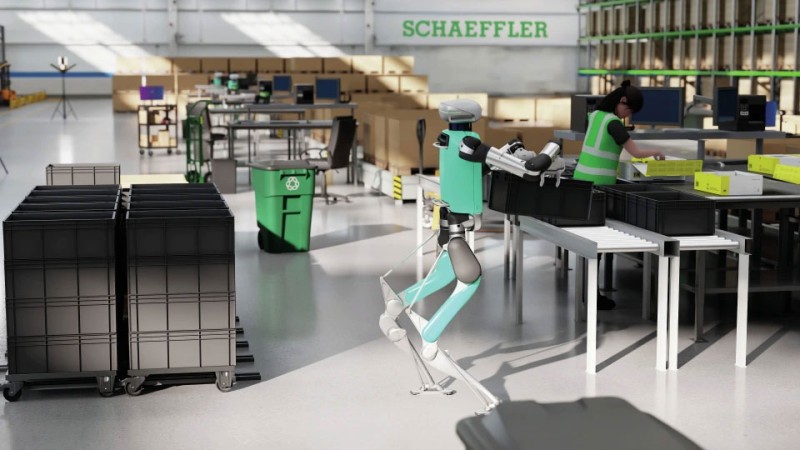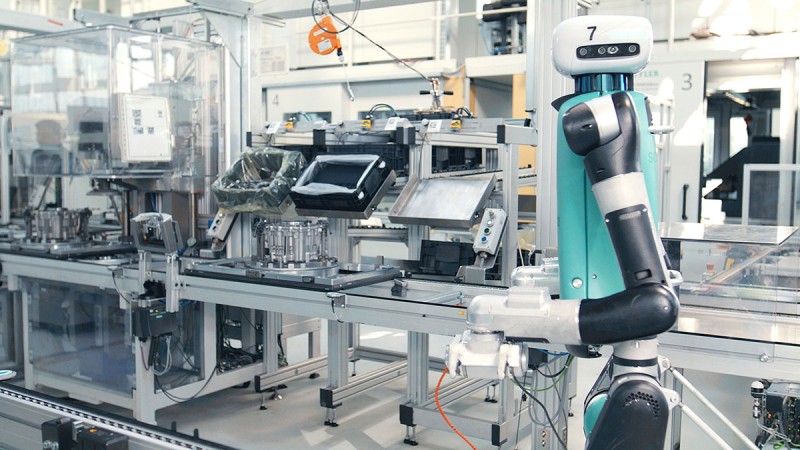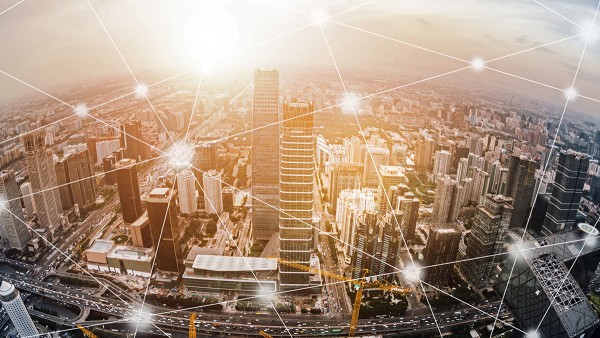Industrial automation: efficient factory planning with AI
Find out how Schaeffler is realizing virtual commissioning of a storage facility with Accenture, Microsoft & NVIDIA and setting new standards in industrial automation.
Digital twins for industrial automation
Schaeffler will develop digital twins, or digital representations of plants and machines, using the NVIDIA Omniverse platform. Employees can model entire factories using AI-powered solutions, accurately simulating the physical properties of materials, processes, and production workflows.
Accenture provides expertise for this platform. Facilities can be put into operation more quickly because their optimal design is simulated and set in advance. This includes, among other things, the virtual layout design of production and storage facilities for efficient material flow, as well as autonomous robot training for seamless and efficient collaboration between humans and robots.
Schaeffler uses digital twins to design facilities faster and more efficiently.
Virtual commissioning with an optimal level of automation
Schaeffler also uses the concept of virtual commissioning to determine the optimal level of automation for a manufacturing or storage facility in advance. In this process, the digital twin is operated virtually in different configurations: from primarily manual work, to the use of autonomous mobile robots (AMR) for supporting transport tasks, to adaptive manipulators like Schaeffler's EMMA and humanoid robots in highly automated facilities.
Deployment of AI and humanoid robots

Accenture and Schaeffler are testing and training robots in digital twins. Physical AI plays a key role in this process: it combines precise physical modeling of the real world with cutting-edge AI technology. This enables robots to autonomously learn how to navigate their virtual environment and accomplish tasks as efficiently as possible.
In a proof-of concept (PoC), humanoid robots, such as Agility Robotics’ Digit, perform material handling, such as tote handling and transport to kitting and commissioning areas. The PoC also demonstrates how Sanctuary AI’s multi-dexterous humanoid robot, Phoenix, learns real-world tasks in Omniverse by observing simulations. An example is assembling customized spare part kits in a Schaeffler spare parts center. The imitation learning technique is enabled by vision AI applications like NVIDIA Metropolis, which capture movements of humans and humanoid robots in the real world and transfer them into the NVIDIA Omniverse.

Optimization during operation
The simulation of various scenarios in the digital twin generates a large amount of data that should be utilized optimally. Schaeffler, together with Accenture and Avanade, a joint venture with Microsoft, is also working on this scenario.
Data from simulations is fed into Microsoft Fabric, a unified AI-powered data platform. This allows employees to compare performance indicators such as availability, utilization, and overall equipment effectiveness of the simulated scenarios, enabling them to identify and address potential issues in a timely manner.

July 2025




